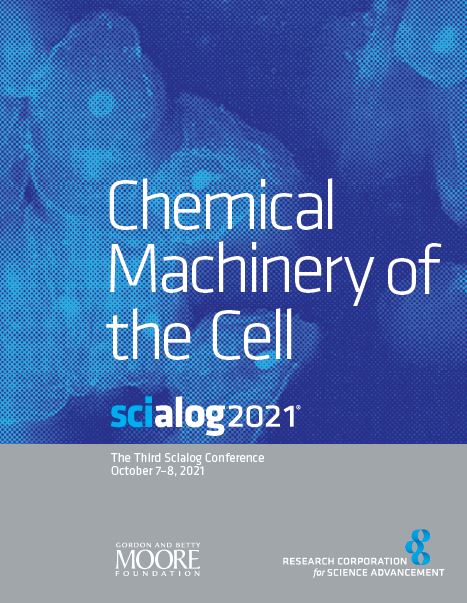Chemical Machinery of the Cell
2018-2021
Sponsors
Gordon and Betty Moore Foundation
Research Corporation for Science Advancement
Additional Support
The Paul G. Allen Frontiers Group
Flinn Foundation
National Institutes of Health Common Fund
Theme
Cells obtain and use energy, reproduce, and respond to their surroundings using their chemical machinery. The macromolecules that make up this machinery are assembled, disassembled, and reorganized throughout the cell’s life cycle, enabling the cell to adapt rapidly in response to environmental cues. Intricate and highly organized machinery synthesize, assemble, and transport components around, in, and out of the cell through highly regulated mechanisms.
These cellular processes have been studied over many decades, often by purifying molecular components and studying reaction mechanisms under carefully controlled experimental conditions. But these experimental systems fall short in letting us see what actually occurs in the extremely dense and complex cellular environment to optimize the efficiency and specificity of the myriad reactions that are happening simultaneously in close proximity. To understand these processes more fully at the molecular and atomic level, new tools and approaches from chemistry and biology will be required. This Scialog, on the Chemical Machinery of the Cell, is based on the conviction that the time is right to bring together chemists and biologists to spark collaborations and develop interdisciplinary projects that will catapult us to a deeper understanding of chemical machinery and reactions in the intact cell. Examples of questions that might be considered are:
- How does the cell organize reactions in functionally distinct compartments that are not bound by membranes?
- How do molecules move through the dense cytoplasm of the cell so that reactions are not limited by passive diffusion rates?
- Do small molecules, some not yet discovered, contribute to increasing reaction rates and specificity through covalent and non-covalent attachment to proteins, nucleic acids, carbohydrates, and lipids?
- Do macromolecules take advantage of electron delocalization to achieve more than binary (on/off) states in information flow and metabolic reactions?
- What combination of new chemical tools including chemical probes, optical techniques, and quantum methods can bring about molecular resolution of the chemical machinery in intact, living cells?
- How can advances in chemical theory and modeling, computation and data analytics, simulations and artificial cellular systems reveal new ideas about the chemical machinery of the cell?
BOOKLETS
2021 Scialog-CMC Conference Booklet
2019 Scialog-CMC Conference Booklet
2018 Scialog-CMC Conference Booklet [800KB PDF]

